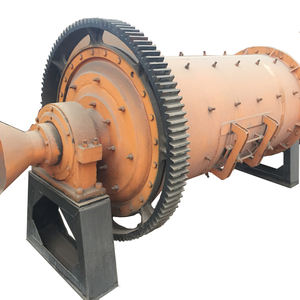**Excavation Workflow Explained: A Comprehensive Guide from Planning to Execution**
(Excavation Workflow Explained: A Comprehensive Guide from Planning to Execution)
Excavation is a critical process in construction and civil engineering projects, serving as the foundation for structures, utilities, and infrastructure. It involves the removal of soil, rock, or other materials to create space for building foundations, roads, tunnels, or underground facilities. A well-executed excavation workflow ensures safety, efficiency, and cost-effectiveness. This article provides a comprehensive guide to the excavation workflow, from planning to execution, highlighting key steps and considerations for mechanical engineers and construction professionals.
### **1. Project Planning and Site Assessment**
The excavation process begins with thorough planning and site assessment. This phase is crucial to identify potential challenges and ensure the project aligns with design specifications and regulatory requirements.
– **Site Survey and Geotechnical Investigation:** A detailed site survey is conducted to map the topography, boundaries, and existing structures. Geotechnical investigations, including soil sampling and testing, are performed to determine soil properties, such as bearing capacity, stability, and groundwater levels. This data informs the design of the excavation and helps mitigate risks like landslides or soil collapse.
– **Regulatory Compliance:** Engineers must obtain necessary permits and ensure compliance with local regulations, environmental guidelines, and safety standards. This includes assessing the impact of excavation on nearby structures, utilities, and ecosystems.
– **Design and Layout:** Based on the site assessment, engineers develop excavation plans, including dimensions, slopes, and support systems. The design must account for factors such as load-bearing requirements, drainage, and accessibility for construction equipment.
### **2. Equipment Selection and Mobilization**
The choice of excavation equipment depends on the project scope, soil type, and site conditions. Common equipment includes excavators, backhoes, bulldozers, and trenchers.
– **Equipment Selection:** For large-scale projects, heavy machinery like hydraulic excavators is preferred, while smaller projects may require compact equipment. Specialized tools, such as rock breakers or dredgers, are used for challenging conditions like rocky terrain or underwater excavation.
– **Mobilization:** Once the equipment is selected, it is transported to the site. Proper mobilization ensures that machinery is positioned for optimal efficiency and safety. Engineers must also plan for fuel, maintenance, and operator training.
### **3. Site Preparation**
Before excavation begins, the site must be prepared to ensure safety and efficiency.
– **Clearing and Grubbing:** Vegetation, debris, and obstacles are removed to create a clear working area. This step minimizes interference during excavation and reduces the risk of accidents.
– **Utility Marking:** Underground utilities, such as gas lines, water pipes, and electrical cables, are identified and marked to avoid damage during excavation. This step is critical to prevent service disruptions and ensure worker safety.
– **Erosion Control Measures:** Temporary measures, such as silt fences or sediment basins, are installed to prevent soil erosion and protect nearby water bodies from contamination.
### **4. Excavation Execution**
The actual excavation process involves the systematic removal of soil or rock according to the design plan.
– **Cutting and Grading:** Excavation begins with cutting and grading the soil to achieve the desired depth and slope. Engineers must monitor the process to ensure accuracy and avoid over-excavation.
– **Shoring and Support Systems:** For deep excavations or unstable soil, shoring systems (e.g., sheet piles, trench boxes) are installed to prevent cave-ins and ensure worker safety. These systems are designed based on soil conditions and excavation depth.
– **Material Handling:** Excavated material is either stockpiled for later use or transported off-site. Proper handling and disposal of materials are essential to maintain site cleanliness and comply with environmental regulations.
### **5. Quality Control and Safety Monitoring**
Throughout the excavation process, quality control and safety monitoring are paramount.
– **Inspections:** Regular inspections are conducted to verify that excavation dimensions, slopes, and support systems meet design specifications. Any deviations are addressed promptly to avoid delays or structural issues.
– **Safety Protocols:** Excavation sites are inherently hazardous, with risks such as collapses, equipment accidents, and exposure to hazardous materials. Engineers must enforce safety protocols, including the use of personal protective equipment (PPE), proper signage, and emergency response plans.
### **6. Post-Excavation Activities**
Once excavation is complete, the site is prepared for the next phase of construction.
– **Backfilling and Compaction:** Excavated areas may be backfilled with suitable material and compacted to provide a stable base for foundations or utilities. Proper compaction ensures long-term stability and prevents settlement.
– **Site Restoration:** The site is restored by removing temporary structures, restoring vegetation, and addressing any environmental impacts. This step ensures the site is left in a safe and sustainable condition.
### **Conclusion**
(Excavation Workflow Explained: A Comprehensive Guide from Planning to Execution)
The excavation workflow is a complex and multi-faceted process that requires careful planning, precise execution, and rigorous safety measures. By following a systematic approach—from site assessment and equipment selection to quality control and post-excavation activities—mechanical engineers and construction professionals can ensure successful project outcomes. A well-executed excavation not only lays the groundwork for construction but also minimizes risks, enhances efficiency, and contributes to the overall success of the project.


